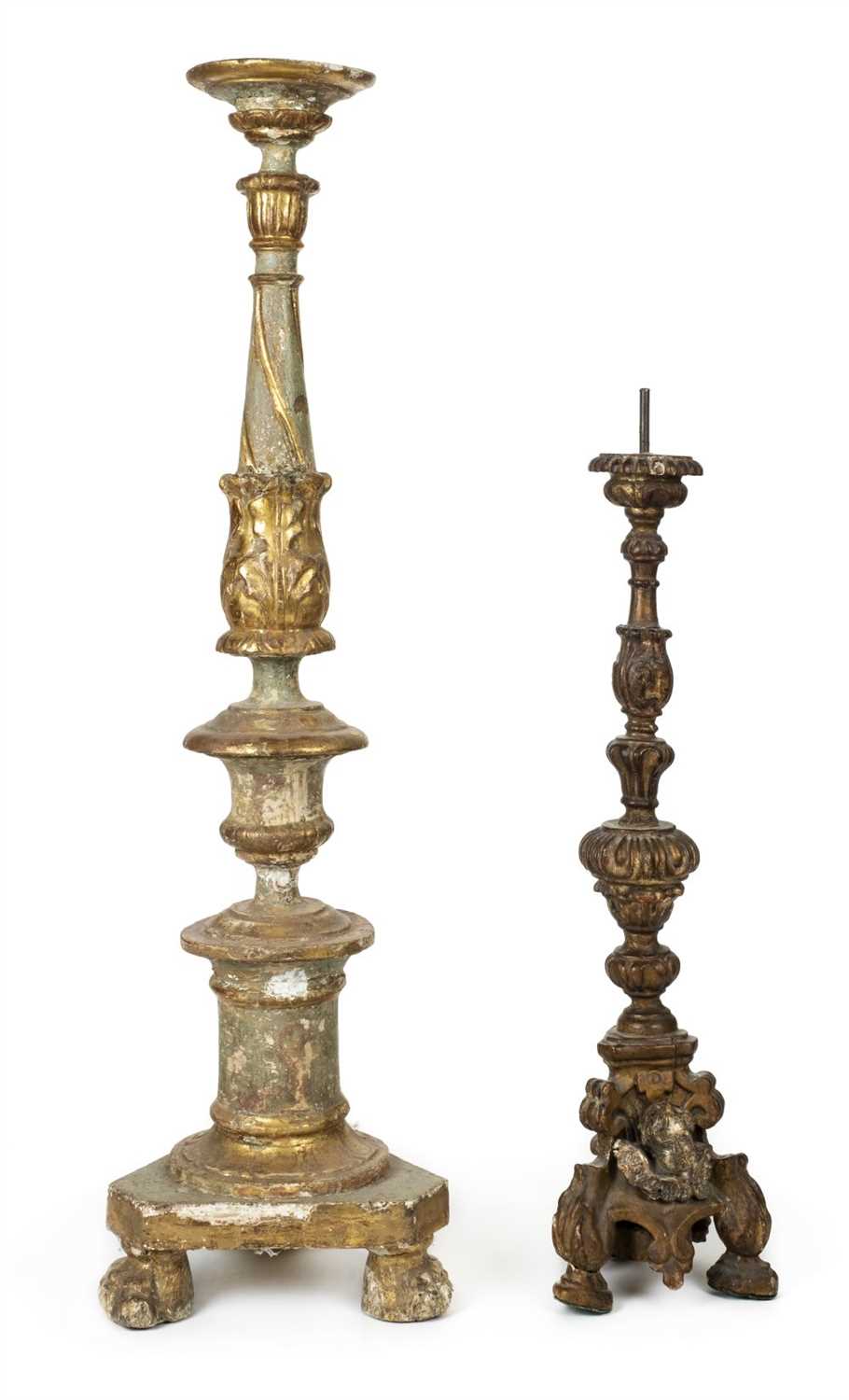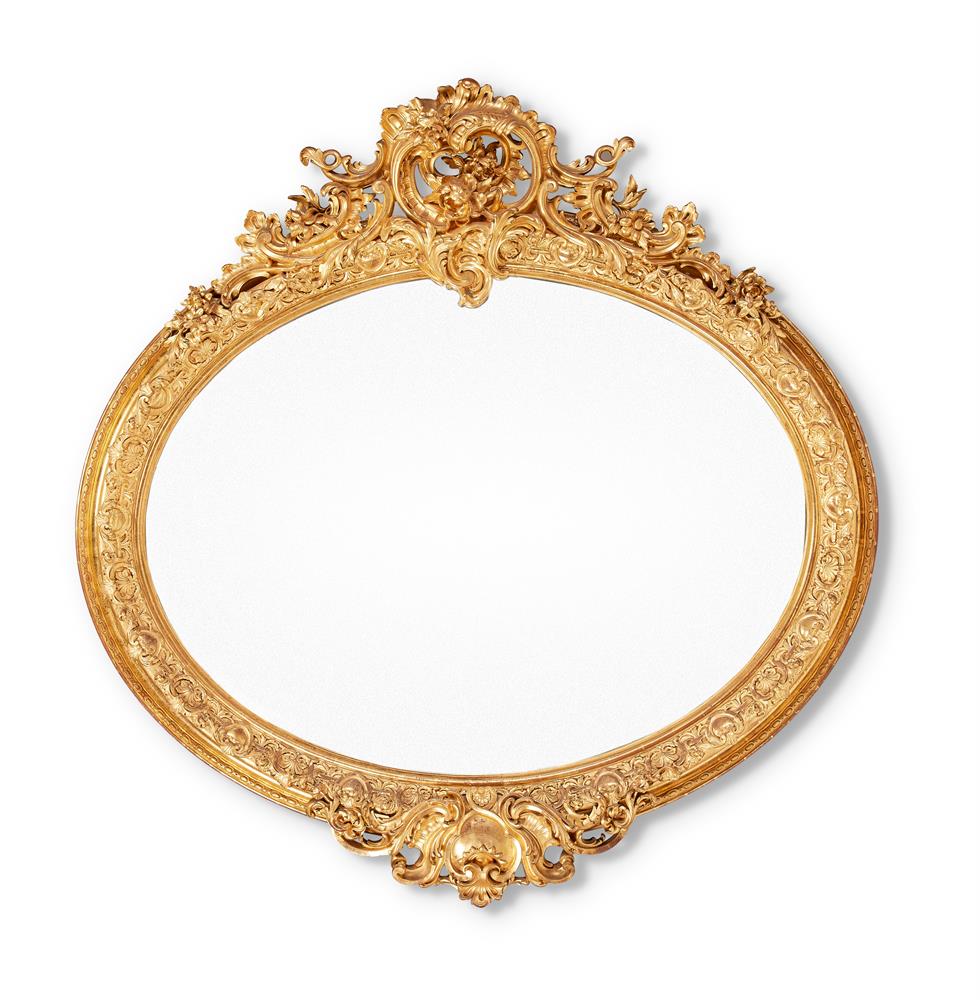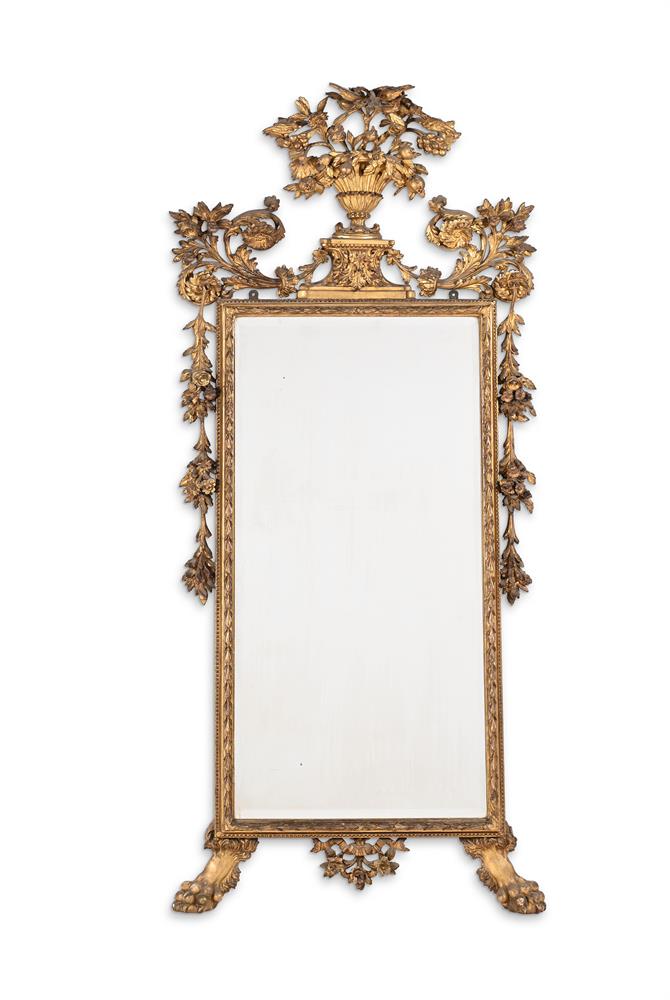A LARGE ITALIAN CARVED, GILT POKERWORK AND PAINTED CASSONEThe front panel painted with the Abduction of Helen of Troy, by a follower of Apollonnio di Giovanni82cm high, 193cm wide, 72cm deepCassoni (rectangular lidded chests) were part of the marriage trousseau, or alternatively formed part of the personal possessions of wealthy women when entering into a convent. They usually came in pairs, and were kept in the bedroom, as can be seen in the 15th century inventories of the Medici palaces (C. Rowell, 'Florentine cassoni at Blickling, Knole and Cliveden', Furniture History, 2015, p. 21). This is a typical mid-15th century Florentine example (with later additions and restoration) with its imbricated lid, single oblong panel on the front and two smaller panels to the sides. The subjects of the cassone paintings and the carved and gilded woodwork were all' antica, typical of the Renaissance revival (ibid.), this particular example most likely depicting the Abduction of Helen of Troy, while both side panels are decorated with elaborate coats of arms. One of the largest collections of cassoni is at the Victoria and Albert Museum, London. The Florentine examples at the V&A, for example, W.68-1925, have more ornate carving than the one offered here, and carved lion paw and acanthus feet. However, during the 19th century, many cassoni were broken up to create grander versions of the original with additional decorative carving, see cassoni at Blickling Hall, Knole and Cliveden (NT 354249, 129489 and 765873).Provenance: This item was inherited from the 7th Viscount Gort, deemed to be of national importance and placed into conditional exemption upon his death.
A LARGE ITALIAN CARVED, GILT POKERWORK AND PAINTED CASSONEThe front panel painted with the Abduction of Helen of Troy, by a follower of Apollonnio di Giovanni82cm high, 193cm wide, 72cm deepCassoni (rectangular lidded chests) were part of the marriage trousseau, or alternatively formed part of the personal possessions of wealthy women when entering into a convent. They usually came in pairs, and were kept in the bedroom, as can be seen in the 15th century inventories of the Medici palaces (C. Rowell, 'Florentine cassoni at Blickling, Knole and Cliveden', Furniture History, 2015, p. 21). This is a typical mid-15th century Florentine example (with later additions and restoration) with its imbricated lid, single oblong panel on the front and two smaller panels to the sides. The subjects of the cassone paintings and the carved and gilded woodwork were all' antica, typical of the Renaissance revival (ibid.), this particular example most likely depicting the Abduction of Helen of Troy, while both side panels are decorated with elaborate coats of arms. One of the largest collections of cassoni is at the Victoria and Albert Museum, London. The Florentine examples at the V&A, for example, W.68-1925, have more ornate carving than the one offered here, and carved lion paw and acanthus feet. However, during the 19th century, many cassoni were broken up to create grander versions of the original with additional decorative carving, see cassoni at Blickling Hall, Knole and Cliveden (NT 354249, 129489 and 765873).Provenance: This item was inherited from the 7th Viscount Gort, deemed to be of national importance and placed into conditional exemption upon his death.













Testen Sie LotSearch und seine Premium-Features 7 Tage - ohne Kosten!
Lassen Sie sich automatisch über neue Objekte in kommenden Auktionen benachrichtigen.
Suchauftrag anlegen